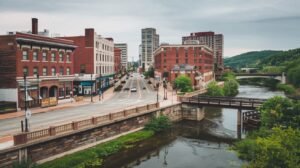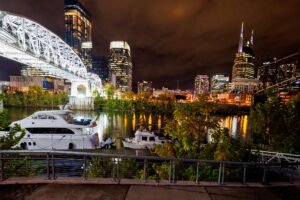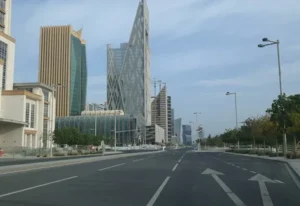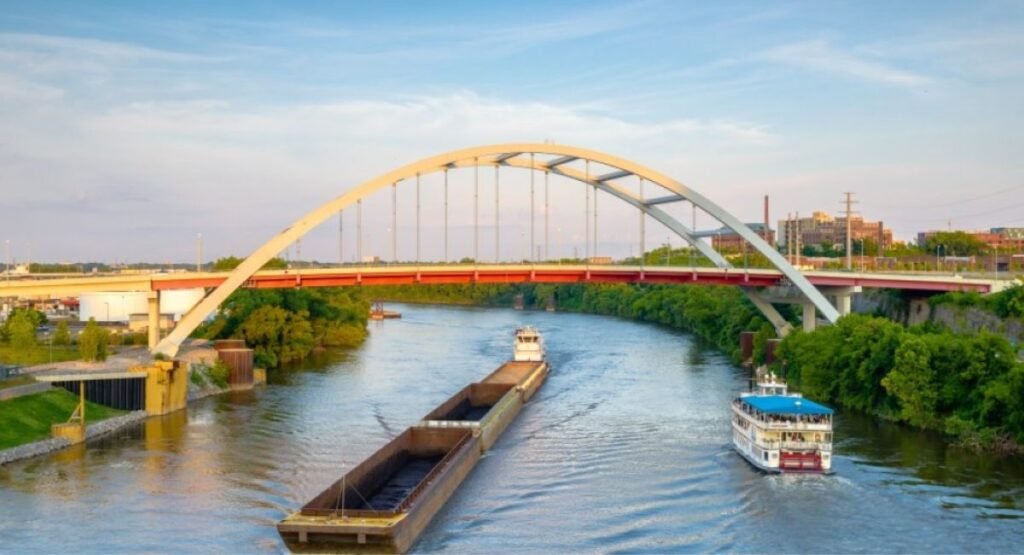Introduction
Gay Street and Cumberland River are two major attractions that represent history and nature together. They represent a deep heritage as well as stunning nature in Tennessee, USA. The excursion into the areas is quite different. Gay Street and Cumberland River are sure to attract the attention of either history enthusiasts or people who take pleasure in nature. The article tries to take you on a journey through history, natural beauty, and significance of these iconic sites.
Gay Street is one of the historic roads in Knoxville, Tennessee. For ages, it has been a commercial and cultural hub. The street reflects a rich heritage that has evolved over the centuries. Cumberland River, on the other hand, is a major waterway flowing through Kentucky and Tennessee. It is ecologically and historically important for it was a lifeline for early settlers, also often utilized during the American Civil War. The two locations provide a deep connection between the past and the present with history blending into natural beauty.
History of Gay Street

Gay Street is much more than just a street. The living monument to Knoxville’s resurging past springs in this one road, dating from the late 18th century when Knoxville was its main street. Thus, through this road, one can witness the whole gamut of Knoxville’s changing scene from an ordinary frontier town to acquiring the character of a modern urban center. Historic buildings in the block, like the Tennessee Theatre, remain as testaments to its cultural significance.
Key Historical Events on Gay Street
- Civil War Impact: Gay Street was a focal point during the Civil War. Knoxville’s strategic location meant that the street witnessed significant military activity.
- Economic Growth: After the war, Gay Street became Knoxville’s financial heart. Banks, theaters, and offices sprang up, making it a commercial hub.
- Urban Revitalization: In recent decades, Gay Street has experienced a renaissance. Modern businesses coexist with historical sites, making it a perfect example of urban renewal.
Key Historical Sites
| Historic Building | Significance |
| Tennessee Theatre | Built in 1928, this iconic theater is a centerpiece of Gay Street’s cultural life. |
| Blount Mansion | The home of William Blount, one of the signers of the U.S. Constitution, is located near Gay Street. |
The Beauty and Significance of Cumberland River
The Cumberland River stretches for 688 miles, distributing scenic landscapes and rich history. It was a major route for the transportation of early settlers. Now, its peaceful waters attract boaters, fishermen, and nature lovers.

Ecological Importance
The Cumberland River passes over various ecosystems. Their waters are home to great fishes of different species, and the riverbanks have a habitat for many kinds of wildlife. Thus, preserving the river’s ecosystem is essential to provide biodiversity in the surrounding region. Preservation efforts feature preservation of natural river features and ecosystem balance.
Historical Importance
The river played a crucial role in the American Civil War. Movement of troops and supplies was possible due to its use. The Cumberland River also aided in shaping the towns’ development along its banks by facilitating trade and easy transportation.
| Aspect | Historical Role | Ecological Role |
| Civil War | Used for military transport | Home to numerous fish species |
| Early Settlements | Transportation of goods | Supports riverbank wildlife |
The Intersection of Gay Street and Cumberland River
What makes Gay Street and Cumberland River so fascinating is the crossing—both metaphorical and actual: these two landmarks assemble past and present into something special, a special combination of historical and natural attractions.

A Cultural and Natural Hub
Gay Street is actually a pretty up-and-coming cultural center in Knoxville, located not too far from the Cumberland River. Tourists would be visited by historic buildings, modern comforts, and ready direct access to nature. A few minutes walk from Gay Street could take one to the very edge of the river, where a quiet stream could wait with gentle flow like an escape from metropolitan life.
Historical Connection to the River
Gay Street and the Cumberland River both played a crucial role in the development of the city. The Cumberland River trading routes made more commercial opportunities for Gay Street. Although interlinked, both have evolved with time to meet the needs of the present period.
Activities and Attractions Around Gay Street and Cumberland River
The list of things to do in Gay Street and the Cumberland River is endless. If you are into history or being close to nature, these places have loads of it for you.

Things to Do on Gay Street
- Tennessee Theatre: Enjoy a live performance or movie screening at this historic venue.
- Blount Mansion: Take a guided tour of this historic home and learn about Knoxville’s early history.
- Market Square: Just a few blocks away from Gay Street, this lively area offers restaurants, shopping, and entertainment.
Things to Do Around Cumberland River
- Boating: The calm waters of the Cumberland River are perfect for boating. Rent a kayak or take a leisurely river cruise.
- Fishing: The river is a popular spot for fishing enthusiasts, offering a chance to catch bass, catfish, and more.
- Hiking: Trails along the river provide scenic views and opportunities to explore the natural surroundings.
| Activity | Location | Suitable For |
| Boating | Cumberland River | Nature lovers, families |
| Theatre | Tennessee Theatre, Gay Street | Culture enthusiasts |
| Hiking | Cumberland River Trails | Adventure seekers |
The Cultural Legacy of Gay Street
It has more cultural importance than its historical buildings. Gay Street is at the heart of all the cultural activities in Knoxville. Festivals and parades often take place on the street.

Where meeting points for artists, musicians, and many performers are there, Gay Street has it all-the original spirit of artistic life.
Environmental Efforts Along the Cumberland River
Continuous efforts are provided to preserve the natural beauty of Cumberland River. Environmental organizations keep the river clean and preserve its natural ecosystem. These efforts help continue the natural wonders from Cumberland River for future generations.
| Organization | Focus Area |
| Cumberland River Compact | Water quality and conservation efforts |
| Tennessee Wildlife Federation | Protecting the river’s ecosystems |
The Future of Gay Street and Cumberland River
Gay Street and the Cumberland River have changed, but their nature remains the same. The future of such landmarks is to preserve their historical and natural texture even as they assimilate with the world of modernity.
Preservation Efforts
City planners and conservationists continued efforts to preserve both the historical and ecological integrity of Gay Street and the Cumberland River. Most of the restored buildings along Gay Street are historic, while along the river, efforts are more placed on preserving the river’s ecosystems.
Sustainable Development
Future development is done in a way that it would accentuate Gay Street and the Cumberland River yet will never allow any historic aspect or natural attraction to crumble. Instead, the image for sustainable growth could highlight how these monuments continue to be an integral part of the community through the years.
FAQs
What is the historical significance of Gay Street?
Gay Street is Knoxville’s historic main street, with a rich heritage dating back to the 18th century. It has played a central role in the city’s commercial and cultural development.
How long is the Cumberland River?
The Cumberland River stretches for 688 miles, flowing through Kentucky and Tennessee.
Are there any outdoor activities available around the Cumberland River?
Yes, the river offers opportunities for boating, fishing, and hiking. Its scenic trails and calm waters attract nature enthusiasts.
Can I visit historical sites on Gay Street?
Absolutely! Gay Street is home to several historic buildings, including the Tennessee Theatre and Blount Mansion.
What role did the Cumberland River play in the Civil War?
The Cumberland River was used to transport troops and supplies during the Civil War, making it a key strategic point.
Are there efforts to preserve the Cumberland River’s ecosystems?
Yes, various environmental organizations work to protect the river’s ecosystems and maintain water quality.
Conclusion
A visit to Gay Street and Cumberland River, on the other hand, offers a unique opportunity to go through the juncture of history and nature. In truth, these are just two large monuments for Tennessee’s heritage, offering a glimpse into the past amidst all the activities and attractions that can be availed of in the present times. Whether you’re a history buff, nature lover, or a bit of both, Gay Street and the Cumberland River are destinations that should not miss your itinerary.
